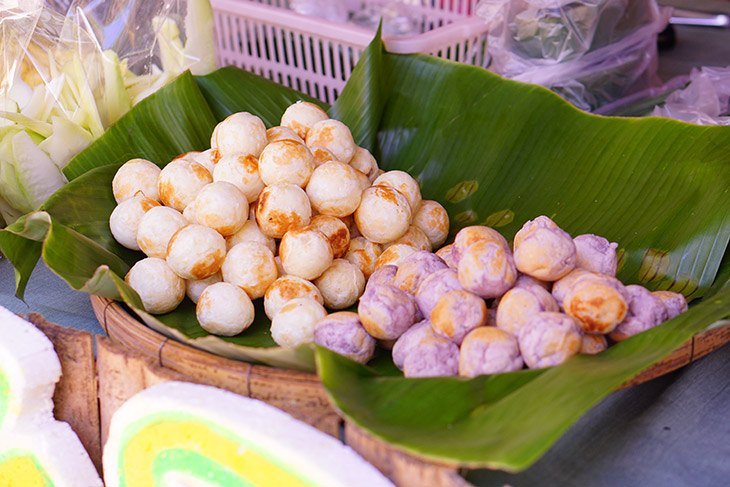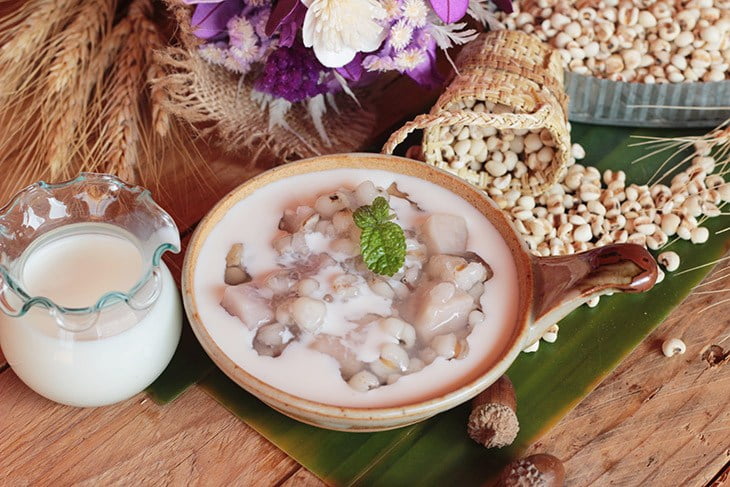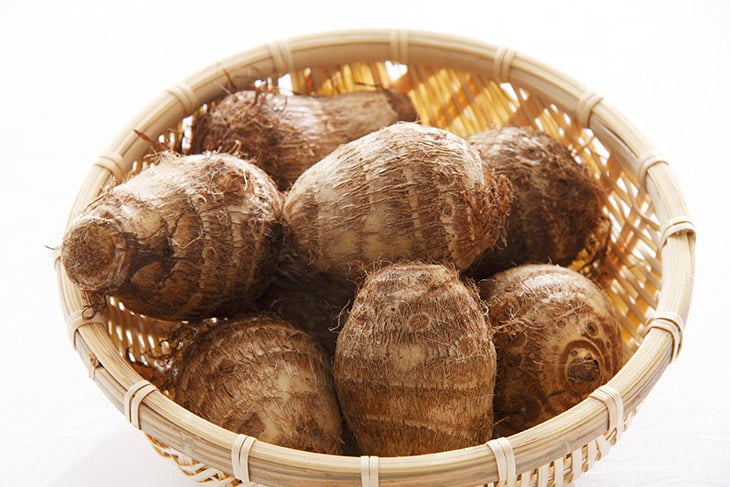Have you ever heard of taro? What does taro taste like? If you’re concern with these questions, then you come in the right place.
I never heard of taro until my friend introduced it to me one day. Since I found the root crop a bit foreign, I’m kind of hesitant to try its taste. If you’re in the same boat as I am, check what I discovered about this root crop below.
What Is Taro?
Taro is a root vegetable grown in semi-tropical regions, like Africa, South India, and Oceania. The root vegetable can’t be eaten raw because it contains calcium oxalate, a chemical compound that causes kidney stones. It can be used similarly to potatoes in curries, desserts, and baked goods.

You can find several varieties of taro: round, small, hairy, and elongated. The color of the flesh may vary from pure white to ivory with flecks of pale purple. The skin, on the other hand, is brown and furry which may sometimes irritate the skin.
Similar to okra, the flesh of a boiled taro can be slimy. Whether simmered or steamed, the texture of the taro is soft, yet remains firm and dry.
So, What Does Taro Taste Like?
According to Fit Day, taro tastes mild and nutty. It has a starchy flavor, almost similar to potatoes. This is why it’s a popular ingredient in baking.
Serious Eats describes the complex flavor not as interesting as potatoes. Although most taro lacks a distinct flavor, the larger varieties have a slightly meaty flavor.

The smaller varieties, on the other hand, have a nice sweet flavor.Taro can be cooked in various ways: steaming, boiling, or baking. No matter what cooking method you choose, be sure to cook it thoroughly if you don’t want your mouth and throat to itch. To cook the taro properly, boil, drain, then reboil in coconut cream or fresh water.
Is Taro Beneficial For Your Health?
Definitely. Taro contains a wide array of vitamins and minerals significant for human health. Here are some health benefits which you can expect from taro:
Good Heart Health.
Taro is a great source of potassium which helps reduce blood pressure and relieve stress.
Good Digestive Health.
As compared to potatoes, taro has better nutritional qualities. It has thrice the amount of dietary fiber, which is significant for good digestive health.
Improves Eyesight
Taro contains antioxidants, like cryptoxanthin and beta-carotene, which help boost vision. These antioxidants prevent free radicals from causing macular degeneration.
Prevents Cancer
Taro is a good source of vitamin A, vitamin C, and other antioxidants. All of them boost your immune system to fight infections and reduce the dangers of free radicals.

Reduces The Risk Of Diabetes
In comparison to potatoes, taro has low glycemic index, This means that taro doesn’t spike your blood sugar which helps reduce the risk of diabetes.
Improves Skin
Taro has high levels of vitamins A and E, both essential for good skin health. These vitamins help treat skin conditions and promotes faster cell turnover. They can also keep your wrinkles at bay and make your skin glow.
Other Health Benefits
The folate and B vitamins found in taro can help boost metabolism and energy. Copper and zinc are essential for good thyroid health. Iron and copper can improve blood circulation and prevent anemia.
What Are The Risks Of Eating Taro?
Taro contains a high amount of calories which can be a problem if you’re trying to lose weight. For every 100 grams of taro, you’ll consume 112 calories.
As compared to potatoes, taro has more carbohydrates which can cause obesity if you’re overdoing it. If you don’t want to pack on the pounds, eat taro in moderation.

Eating too much taro can also lead to gout and kidney stones due to its calcium oxalate content. To reduce the oxalates, steep taro in water overnight before cooking. You can also restrict the absorption of oxalate by eating taro with milk or other calcium-rich foods.
The furry skin can irritate your skin. To prevent such reactions, wear gloves or coat your hands with cooking oil. Cook thoroughly to prevent any allergic reactions.
Selecting And Preparing Taro
Taro is available all year round and can be found in grocery stores. The size may depend on how you want to cook the taro. If you want to boil them, look for small taro roots because they’re moist.
Most people prefer larger taro because they can be cooked in various ways plus they can feed a lot of people. When selecting the best large taro, look for firm and heavy ones.

When taro is fresh, the skin is slightly moist. Avoid buying those with soft or dry patches. They should be free from molds and cracks. You can store your taro in a paper bag at room temperature.
To prepare, wash thoroughly then scrub and peel the skin using a vegetable peeler or a paring knife. If using smaller taro, leave the skin on. Be sure to cut the taro into similar sizes to cook them at the same rate.
If you don’t want the taro to be slimy, parboil them first then rinse before you add them to the recipe. Taro can be used in several recipes, such as bubble tea, fries, and chips.Watch how to prepare and cook taro in this video.
Final Thought
Now that you know the answer to the question, “What does taro taste like?”, I bet you’re excited to try them yourself. Given its excellent nutritional value, it can’t be denied that taro is a little secret to good health. Keep in mind that this root vegetable contains calcium oxalate, so you’ll need to cook them very well.
Have you tried eating some taro? Share to us your thoughts in the comments section along with your questions. If you like this article please share it with your friends and family.